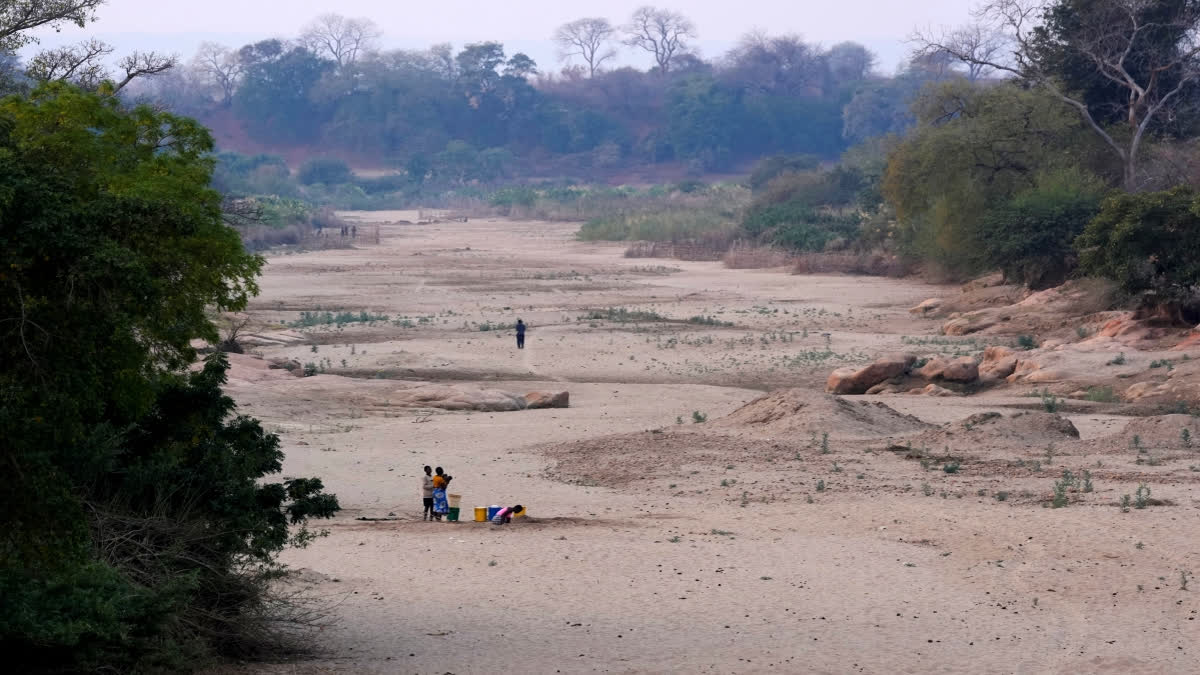On October 24, 2024, in Nairobi, Kenya, the UN Environment Program (UNEP) launched its 15th annual Emissions Gap Report, titled 'Emissions Gap Report 2024: No More Hot Air... Please!'. This report delivers a sharp and alarming message: current climate policies are insufficient to keep global warming within the 1.5°C target set by the Paris Agreement. Instead, the world is on track for a catastrophic temperature rise of 2.6–3.1°C by the end of the century, with dire consequences for humanity and ecosystems.
As COP 29 approaches in Baku, Azerbaijan, UNEP's report is a wake-up call for world leaders to urgently tighten their Nationally Determined Contributions (NDCs) with ambitious emission reduction targets. UNEP warns that the window to keep warming below 1.5°C is closing fast. To have any hope of meeting the 1.5°C goal, global emissions must fall by 42% by 2030 and 57% by 2035. Every fraction of a degree matters — each reduction will save lives, protect ecosystems, and reduce the escalating costs of climate-related disasters.
Record Emissions and G20 Responsibility
The report paints a bleak picture of the current situation. Greenhouse gas (GHG) emissions hit a record high of 57.1 gigatonnes of carbon dioxide equivalent (GtCO2e) in 2023, marking a 1.3% increase from 2022. The power sector remained the largest contributor, responsible for 15.1 gigatonnes, followed by transportation at 8.4 gigatonnes, with agriculture and industry contributing 6.5 gigatonnes. The continued rise in emissions is propelling the world into dangerous, uncharted territory.
The G20 nations, responsible for a staggering 77% of global emissions, bear the primary responsibility for the climate crisis. Despite their significant contributions, major players such as China, India, Indonesia, Mexico, Saudi Arabia, South Korea, and Turkey have yet to meet their emissions caps, the first step toward net-zero goals.
The United States stands as the largest cumulative emitter, with 18 tonnes of CO2 per person in 2023 and a historic total of 527 GtCO2 since 1850. China, the second largest emitter, produced 11 tonnes of CO2 per person in 2023, contributing 300 GtCO2 to date. Together with the European Union, which has emitted 301 GtCO2, these countries are responsible for the bulk of historical emissions driving the climate crisis.
Shrinking Window to Limit Warming to 1.5°C
UNEP stresses that limiting warming to 1.5°C is technically possible but requires immediate and large-scale action. To stay on track, global emissions must drop by 57% by 2035 and 42% by 2030, relative to 2019 levels. Without these cuts, the world will exceed the 1.5°C threshold and will be forced to rely on risky carbon dioxide removal technologies to bring temperatures back down.
The report warns that current policies put the world on track for a 3.1°C rise by the end of the century, surpassing critical tipping points that could trigger irreversible climate impacts — such as extreme heatwaves, catastrophic storms, and rising sea levels that would displace millions of people.
Inaction has already added 20 to 35 gigatonnes of CO2 to the atmosphere, making the pathway to 1.5°C much steeper. As UNEP starkly puts it, "The lack of action and time lost has reduced the remaining carbon budget and increased the risks of locking in carbon-intensive infrastructure."
The Way Forward: Renewable Energy and Forests
Despite the grim outlook, UNEP remains cautiously optimistic about rapid emission reductions if countries act decisively. Solar and wind energy, along with better forest management, offer the most promising solutions. Expanding solar photovoltaic technology and wind power could reduce emissions by 27% by 2030 and 38% by 2035. In addition, reforestation, afforestation, and improved forest management could account for 20% of potential emission cuts by these same dates.
UNEP calls for a global, cross-sector approach to climate action, with enhanced international cooperation and greater involvement from the private sector to support developing nations in their fight against climate change. UNEP advocates for a sixfold increase in funding for preventive measures to tackle the scale of the problem.
India's Role in the Climate Battle
India, the world's third-largest emitter, saw a 6.1% increase in emissions in 2023. While the country's per capita emissions are still relatively low at 2.9 tonnes — far below the global average — its rapid industrialisation is driving a significant rise in emissions. India's challenge lies in its heavy reliance on coal, despite ambitious goals under the Paris Agreement to reduce emissions intensity by 33–35% by 2030 relative to 2005 levels.
However, there is hope. India is rapidly expanding its solar and wind energy capacity and could emerge as a global leader in the clean energy transition. However, success will require not only strong domestic policies but also international support in the form of technology transfers and climate financing.
The Stakes for COP 29 and COP 30
As world leaders gather for COP 29 in 2024 and COP 30 in 2025, they face a critical decision: continue on the path toward catastrophic warming or take the bold steps necessary to keep 1.5°C within reach. UNEP is clear that the next round of NDCs, due in early 2025, must commit to unprecedented emission reductions.
The report's message is blunt: all countries, particularly the G20, must do more. Governments, businesses, and individuals must act now. The cost of inaction is too high, and the time to act is running out.
UNEP Executive Director Inger Andersen summed up the urgency: "There can't be any more hot air." COP 29 must deliver action, and COP 30 in Brazil in 2025 must be a turning point, where the world finally commits to the major steps required to secure a livable future. The emissions gap is widening, but it is not yet too late to bridge it.
(Disclaimer: The opinions expressed in this article are those of the writer. The facts and opinions expressed here do not reflect the views of ETV Bharat)



